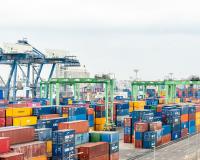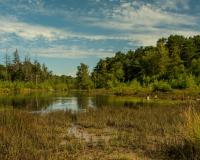
Vibrant Environment
All
All | Biodiversity | Climate Change and Sustainability | Environmental Justice | Governance and Rule of Law | Land Use and Natural Resources | Oceans and Coasts | Pollution Control

Regional or bilateral trade promotion agreements, like the North American Free Trade Agreement (NAFTA), sometimes include environmental obligations for signatories. But only a few of these allow for environmental submissions—a process where persons or legal entities can raise issues with the enforcement record of any of the signatory nations.


For the last several decades, many leading businesses have expressed support for climate policy in the United States. While there are many businesses that expressed concerns and even advocated for policies back into the late 1990s, here I will trace efforts back to 2006. That was the year the U.S. Climate Action Partnership (USCAP) was initiated. The USCAP was a collaboration between leading businesses and climate-focused NGOs. Its goal was to develop consensus policy recommendations and principles for Congress and the new executive administration that would be elected in 2008.

The climate emergency is here, and the only way to stop the downward slide to chaos is to cut methane and other super climate pollutants as fast as possible, while also dramatically reducing carbon dioxide emissions. One message has been made clear by the United Nations Environment Programme and Climate and Clean Air Coalition’s Global Methane Assessment, and the IPCC’s Sixth Assessment reports: Cut methane now or doom the planet.

In 1970, amendments to the Federal Water Pollution Control Act introduced state “Water Quality Certifications” into federal environmental law. This provision, recodified as Section 401 of the Clean Water Act in 1972, provides that states have the opportunity to review applications for any “federal license or permit to conduct any activity” which may result in any discharge to the waters of the United States, and to certify that any such discharge will comply with, among other things, state water quality standards for such waters.

The Intergovernmental Panel on Climate Change’s (IPCC’s) latest reports do not bode well. The 2021 Physical Science Report, for example, emphasizes as its primary conclusion that “[i]t is unequivocal that human influence has warmed the atmosphere, ocean, and land.” The global average surface temperature increase since 1850 is about 1.07 degrees Celsius (1.93 degrees Fahrenheit), driven by anthropogenic greenhouse gas emissions.

In January, ELI held the first CLE webinar in the new Pro Bono Clearinghouse series, “Community Lawyering for Environmental Justice Part 1: Key Concepts, Skills, and Practice-Oriented Specifics.” The public webinar brought together an engaging panel of justice-oriented attorneys to meaningfully discuss community lawyering.

When was environmental law first recognized as a field worthy of endeavor? Legal academies began teaching courses in the new laws as they were propounded a half century ago, but the field existed earlier. It could be found, if only in fragments, in some law schools and engineering schools and colleges of agriculture, mining, and forestry. And there were repositories of environmental professionals in the government’s land bureaus and extension services.

On January 1, I was welcomed as ELI’s new president. I’m extraordinarily excited and deeply honored to lead this remarkable organization. It is special for me because I began my legal career at the Institute many years ago, an experience that shaped some of my core values around integrity and impact. I continue to be inspired by ELI’s mission and I’m delighted to be back, working with this wonderful group of people and our partners.

Cities, the U.S. military, and private businesses are increasingly turning to artificial intelligence and analytical tools as they strive for greater resiliency amid growing incidents of climate-related flooding, heat waves, and other extreme events. In January, participants in the Environmental Law Institute’s 9th GreenTech webinar—“Technology and Climate Resiliency”—discussed these developments and the incentives for adoption of cutting-edge tools and various impediments.